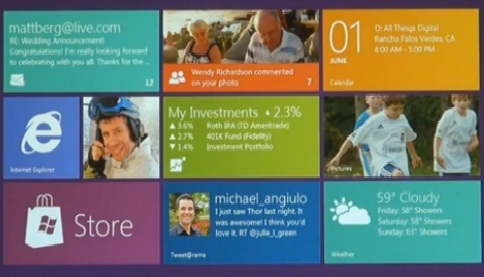Windows 8 To Include USB 3.0 Support

Microsoft has revealed more details about Windows 8, including that it will support USB 3.0
Microsoft is provided more snippets of detail about Windows 8, its next-generation operating system reportedly due for release sometime in 2012.
The new details come courtesy of the company’s “Building Windows 8” blog, which launched a week ago. Windows 8 will feature “robust” USB 3.0 support, according to the 22 August posting by Steven Sinofsky, president of Microsoft’s Windows and Windows Live division.
“By 2015, all new PCs are expected to offer USB 3.0 ports, and over 2 billion new ‘SuperSpeed’ USB devices will be sold in that year alone,” he wrote. “The decision to invest in USB 3.0 was an easy one to make, but doing so without compromising the existing USB ecosystem was a big challenge to overcome.”
Compatibility Challenge
According to his count, Windows must remain compatible with “billions of older USB devices,” in turn offering a significant engineering challenge.
 “USB software is complex because it has to manage hubs and devices while still dealing with any errors,” he added. Internally, Microsoft’s teams began to tackle the issue by creating enormous flow charts and a code generator capable of converting Visio diagrams into software. (Visio is a Microsoft-built diagramming program.) The teams also utilised a proprietary tool, known as Zing, in order to validate the software model. After that came the inevitable rounds of testing.
“USB software is complex because it has to manage hubs and devices while still dealing with any errors,” he added. Internally, Microsoft’s teams began to tackle the issue by creating enormous flow charts and a code generator capable of converting Visio diagrams into software. (Visio is a Microsoft-built diagramming program.) The teams also utilised a proprietary tool, known as Zing, in order to validate the software model. After that came the inevitable rounds of testing.
“We also made a heavy investment in building a custom tool – the Microsoft USB Test Tool (MUTT) to simulate a full range of device behaviours that we’d observed over the years,” Sinofsky concluded. “Over time, we shared the MUTT with our hardware partners and they’ve used it to find and correct problems in their devices before releasing.”
Microsoft will likely reveal all sorts of details about Windows 8 at this September’s BUILD conference, as what will surely be a long ramp-up to the platform’s release.
Marketing Push
In previous postings on the Windows 8 blog, Sinofsky has offered a rundown of the 35 feature teams working on the operating system, as well as the “features or areas” under development by those teams. He also spent time defending the decision to abandon the “traditional” Windows desktop model in favour of more colourful, Windows Phone-style tiles.
“So much has changed since Windows 95 – the last time Windows was significantly overhauled – when the ‘desktop’ metaphor was established,” Sinofsky wrote in the inaugural 15 August posting. “Today, more than two out of three PCs are mobile (laptops, netbooks, notebooks, tablets, slates, convertibles, etc.). Nearly every PC is capable of wireless connectivity.”
According to the feature list, Windows 8 will also feature an app store of some sort. That could directly counter Apple’s Mac App Store, which lets users download applications to their desktop instead of having to purchase boxed software. The presence of a Microsoft-branded app store would also let Windows 8 on tablets compete on equal footing against rivals such as the iPad (which offers access to Apple’s App Store) and Android devices (which include Android Marketplace).